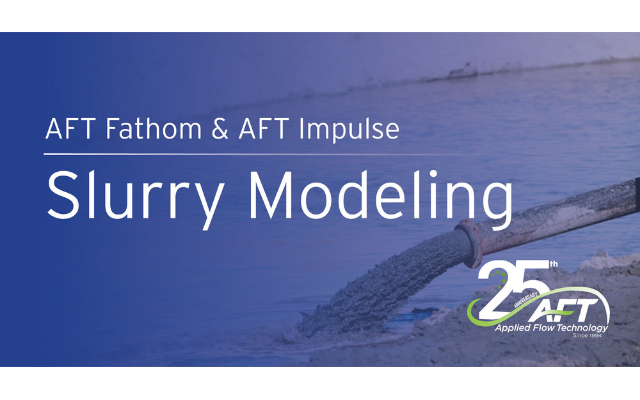Contributor: Applied Flow Technology
Flow characteristics such as velocity and pressure drop have a dependence on fluid properties. Slurry systems with settling solids, non-settling slurry systems and other non-Newtonian fluids require special consideration to accurately model system operation due to their “funny” fluid properties.
In the case of settling solids, the local velocity is critical as this must be above the threshold set by the slurry’s deposition velocity. It is also critical to ensure that loss values are being calculated correctly as these fluids enter the laminar flow region.
There are several applications where non-Newtonian fluid behavior shows up. Here are some examples:
- Ore transportation in mining operations
- Mineral processing – oil sands, alumina production, tailings distribution
- Food products – peanut butter, chocolate, ketchup
- Consumer products – toothpaste
- Paint
- Blood flow
- Ash handling in power generation
- Nuclear waste processing
- Cement
- Sewage
- Dredging
- Fertilizer Production
Any engineer handling non-Newtonian fluids should have an all-in-one simulation tool to model this important branch of fluid engineering. A quality flow analysis software can handle not only a wide variety of fluids other than water but should have the ability to handle other types of behavior such as paper stocks, Power Law fluids, Bingham Plastics, or settling slurries.
AFT Fathom and AFT Impulse both have a proven method for predicting losses for systems operating in laminar flow conditions, as often occurs with non-Newtonian fluids. The Adjusted Turbulent K Factor (ATKF) method is used to apply corrections to pipes and components involving these special flows. If you are a current AFT user, the ATKF method is enabled by default, and can be edited on the System Data tab in the
System Properties window.
Modeling Pro Tip:
Always check the Reynold’s numbers when modeling a piping system. If the Reynold’s numbers in your model are in the laminar flow regime, or you are modeling a non-Newtonian fluid, then the ATKF method is for you! If you are curious about how significant an impact this method has on your system, then choose “None” for Laminar and Non-Newtonian Corrections, as seen in the figure above, and re-run your model. It may be shocking to see how much of an impact the ATKF method has.
So how long has this technology been around?
AFT Fathom has had the capability to model homogeneous, non-Newtonian fluids since 1999. It has had the capability to model heterogeneous, non-Newtonian flow since the release of the Settling Slurry add-on module in 2009.
As Applied Flow Technology offered more capability to model non-Newtonian fluids, we had a steady stream of requests to model waterhammer and surge in non-Newtonian fluids especially in heterogeneous, settling slurry pipe flow.
Thus, the AFT Impulse Settling Slurry add-on module was released. To date, it is currently the only commercial software solution that can model both non-settling and settling slurry non-Newtonian waterhammer.
It is important to clarify, non-settling, non-Newtonian fluid modeling is part of the standard AFT Fathom and AFT Impulse (for waterhammer) packages. Modeling settling slurries requires adding on one of the inexpensive add-on slurry modules.
Learn More with this Technical Paper:
In September 2012, Daniel W. Wood of DuPont and Trey Walters of Applied Flow Technology published a technical article for the International Pump Users Symposium that discusses how significant operational problems involving non-settling slurries and laminar flows were solved using the ATKF method that is used in AFT Fathom. This technical article can be found on our website and provides further insight to various methods used to correct for non-Newtonian and Laminar flows: Resolving Operational Problems in Pumping Non-Settling Slurries.
If you would like to see how you can use AFT Fathom or AFT Impulse to model settling slurries watch this webinar above. *Please note the webinar has some unfortunate feedback in the beginning but it clears up very quickly.




